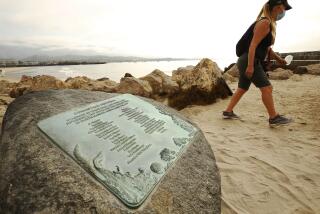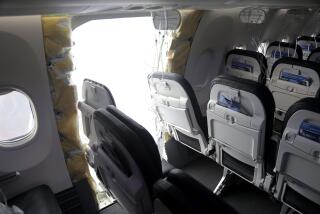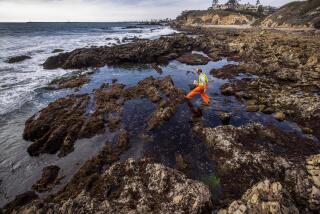BP, contractors violated safety rules, U.S. inquiry finds
Reporting from Washington and Atlanta — BP and the two other companies drilling the exploratory Macondo oil well in the Gulf of Mexico all violated federal safety regulations leading up to last year’s oil spill, a federal investigation concluded in findings that could be crucial for a Justice Department investigation and numerous lawsuits surrounding the disaster.
The report pinned much of the blame on oil giant BP, which was “ultimately responsible” for operations and safety on the rig. But the joint inquiry by the Coast Guard and the Bureau of Ocean Energy Management, Regulation and Enforcement was critical of BP’s drilling contractors,Transocean and Halliburton.
“The loss of life at the Macondo site on April 20, 2010, and the subsequent pollution of the Gulf of Mexico through the summer of 2010 were the result of poor risk management, last?minute changes to plans, failure to observe and respond to critical indicators, inadequate well control response, and insufficient emergency bridge response training,” the Bureau of Ocean Energy Management concludes.
The joint panel found that “a central cause of the blowout was failure of a cement barrier” that was supposed to seal the well. Halliburton was responsible for mixing and testing the cement. The report says BP made a series of decisions that saved money but increased risk and might have contributed to the cement’s failure.
The report’s conclusions highlighting numerous failures to observe safety practices and communicate effectively in the dangerous deepwater well drilling operation echoed findings from earlier inquiries, including one by a presidential commission.
But the fact that a government commission apportioned blame in blunt conclusions increases the chances that BP, Transocean or Halliburton could face criminal charges for their role in the disaster, analysts said.
“What makes this report more significant is that it provides the views of the experts within the government about what caused the spill,” said David Uhlmann, former chief of the environmental crimes section at the Justice Department, in an email. “It will be hard for the Department to distance itself from the findings of the Coast Guard and BOEMRE,” said Uhlmann, a University of Michigan law professor.
The report was the result of a joint investigation set up about a week after explosions ripped through the Deepwater Horizon drilling rig, killing 11 men and spewing nearly 5 million barrels of oil into the Gulf of Mexico. The two agencies each did a separate report that they issued jointly on Wednesday.
The Coast Guard’s 288-page section focuses on what happened from the moment the Deepwater Horizon drilling crew reported a “well control situation” on the evening of April 20. The Bureau of Ocean Energy Management’s report, however, delves into the decisions made in the weeks preceding the disaster and those made that evening that converged to set off the well blowout and rig explosion.
The bureau’s report asserts that the three companies violated at least half a dozen federal regulations largely governing drilling safety. It remains unclear what penalties the bureau would assess against the companies.
BP and Transocean responded Wednesday largely by finger-pointing. Halliburton did not return calls for comment.
“BP agrees with the report’s core conclusion — consistent with every other official investigation — that the Deepwater Horizon accident was the result of multiple causes, involving multiple parties, including Transocean and Halliburton,” the oil company said in an emailed statement.
Transocean disputed the report’s criticism of its crew’s preparedness and said in a statement the report “finally puts to rest all previous allegations that improper maintenance of the blow-out preventer contributed to the tragedy.”
The results of a forensic examination of the destroyed blowout preventer were among the few new details in the report. It states that the mammoth device was unable to cut and seal the drill pipe that sent hydrocarbons rushing up from the well. The pipe had buckled from the intensity of the blowout, leaving it outside the reach of shear rams on the blowout preventer.
The authors of Wednesday’s report criticized Transocean, the rig operator, the Coast Guard response, and the Marshall Islands, the tiny Micronesian island nation under which the Horizon rig was flagged.
The report finds that a “clerical error” in the Marshall Islands bureaucratic process allowed the Deepwater Horizon to be commanded by two crew members, a master and an offshore installation manager, creating “command confusion” at the critical point when they tried, in vain, to disconnect from the well using the rig’s emergency system.
Moreover, by turning its inspections over to private contractors, the authors charge, the country “effectively abdicated its vessel inspection activities.”
Banerjee reported from Washington and Fausset reported from Atlanta.
More to Read
Sign up for Essential California
The most important California stories and recommendations in your inbox every morning.
You may occasionally receive promotional content from the Los Angeles Times.











